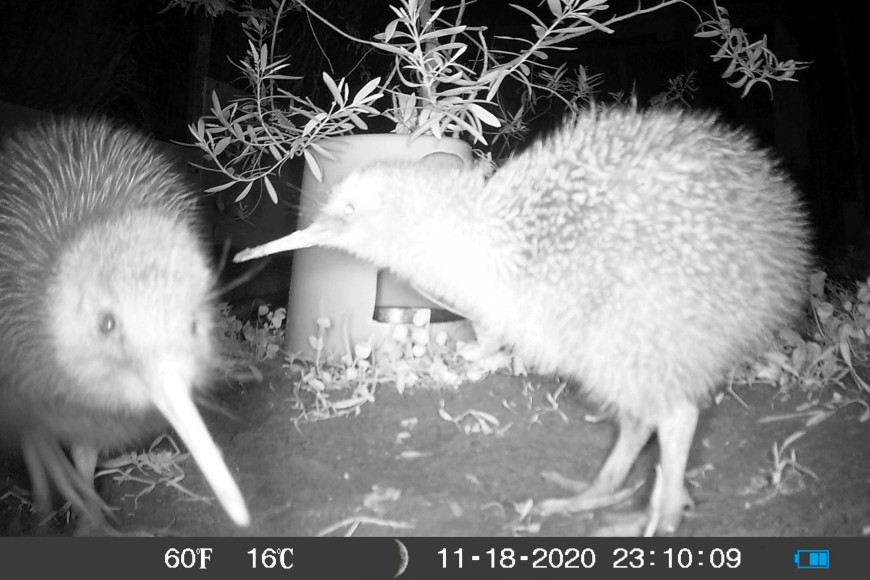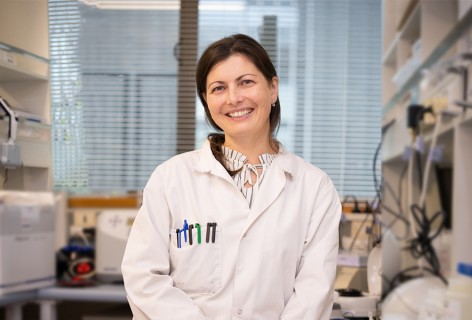Improving the diet of captive kiwi chicks
In this section
Kiwi are precocious – they are born fully feathered and ready to dig out insects and soil in the process! Manaaki Whenua Senior Researcher Manpreet Dhami and her two postgraduate students Priscilla San Juan and Stephen Rowe have found that having soil as a condiment to their main meal can provide kiwi with some important microbes. Something that, of course, a kiwi chick cannot do if it lives in a clean plastic box in a hatchery.
Kiwi are generally in serious trouble – depending on the species they are classed between Recovering and Nationally Critical. Their populations have been steadily declining (2-5% yearly) for a few decades now. The Operation Nest Egg (O.N.E) has been running for more than 20 years and helps to ensure that 95% of all eggs in the hatchery result in a live chick. Hatcheries across Aotearoa are aiming to bump the numbers of kiwi birds up by 2% yearly and release an ambitious total of 10,000 kiwi birds into the wild.

Elmo and Wiggles taking a selfie!
How can you tell if a kiwi chick is healthy and ready for release? One metric is the weight, but paradoxically that can be misleading. The birds in the wild are lean, probably because they store and use their fat more effectively. The hatchery chicks are heavier than their wild peers but when released many birds start losing their weight very quickly and must be recaptured and put on a special diet.
Hatchery staff wondered why kiwi chicks were not thriving in the wild, especially after such an excellent start in the hatchery. Scientists promptly started scrutinising this problem from many different angles (and this time the angle was rather smelly). They safely collected the poo of the kiwi chicks and sequenced it to look at the microbes inside the birds' guts. Compared with the wild birds, the hatchery residents had drastically different microbes in their guts (see Priscilla San Huan’s paper).
“The importance of the birds' gut flora had been overlooked in the past. The end goal is to put good microbes back into the kiwi to give them the best possible start to life,” says Manpreet.
However, not any soil will do. Soils harbour good microbes and deadly pathogens, such as Aspergillus. Therefore, soil samples must be checked before being placed in the enclosure (see Stephen Rowe’s paper). After a soil sample is confirmed to be Aspergillus-free, kiwi chicks get a good serving of soil for their breakfast (see Stephen Rowe’s poster), along with some artificial beef, cat biscuits, green peas, and vitamins. The microbes from soil can contribute to the diverse community of the kiwi gut microbes. This improves the health of the kiwi chicks, while they wait to grow big enough for release in the wild. For now, scientists and hatchery staff hope that the good start provided will prime these chicks to remain healthy when they resettle in the wild.
Publications
- Captivity reduces diversity and shifts composition of the brown kiwi microbiome. Priscilla San Huan et al.. Link
- A PCR-based assay for screening substrates for Aspergillus fumigatus for application in kiwi hatcheries. Stephen Rowe et al.. Link
- pdf Poster: Investigating soils as a probiotic for improving the health of the Ōkarito kiwi (Apteryx rowi) in hatcheries. Stephen Rowe et al.. pdf File, 1.3 MB
Key contacts




